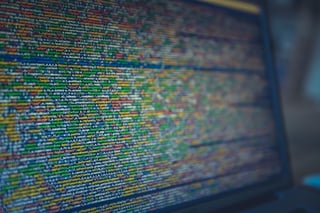
Artificial intelligence (AI) is one of the most important software capabilities that the applications of the future will use. AI delivers capabilities that save time and can fundamentally improve the user experience from recommending next steps to simply automating tasks that are fairly repetitive. AI isn't science fiction, though. At Kingland, we believe you need real intelligence to do artificial intelligence well, particularly in the area of unstructured data.
Reading. It's a fairly common task and there are a LOT of similarities between how an individual learns to read and how to think about AI. We all learn to read when we're very young and we learn to read more advanced books, texts, and documents as we get older. It's a progression. We learn that letters make certain sounds. We then learn that different letter combinations make certain sounds. We then learn to identify words, and as those words are grouped together, we learn to read sentences. As we gain experience, we understand there is a nearly infinite number of words that can be produced and we continue to improve our reading to be able to read nearly any word placed in front of our eyes.
Once a person becomes proficient in reading, the next step is understanding. Not only can I read the letters "R-E-D" but I can then begin to understand that they mean a color and that color is red, the color of an apple, a fire truck, or a stop sign. Once we begin to comprehend the words and the sentences, we can begin to apply our reading. When we read, "The bus slowed down and stopped at the red sign on the corner of 5th and Elm," we can begin to draw conclusions that perhaps that red sign is a stop sign. Perhaps we know that specific location and recall there's a bus stop located there. This is how it works. We learn how letters and words behave. We learn to understand how they work together in language. We then learn how to apply language in making sense of the world.
For unstructured data, artificial intelligence can do the same thing with many different algorithms available to identify nouns, verbs, sentiment, actions and even meaning. However, as the text gets more challenging, this is where real intelligence comes in.
Artificial Intelligence vs Real Intelligence
As we think about AI at Kingland, we are always looking to replicate how our top analysts and data scientists think. When they read, the level of understanding and application is at a very high level. Take the following text from a news release as an example...
"Restaurant Brands in deal to acquire Popeyes Louisiana Kitchen for $1.8 billion"
We all can read that statement, but here's what goes through the mind of one of our top data scientists:
This is the bar for real intelligence, but it's also our expectation for artificial intelligence. Teaching software to read this simple news release, identify the entities, and then start to identify the probability of action, the related data attributes, and the overall confidence of the source is how we're moving AI from simple reading to understanding and applying the information. Taking unstructured data and transforming it into structured information that can be used confidently is what legacy systems need to function.
Experts will always have the best real intelligence, but the closer AI-driven applications can be to providing information and data that can be used immediately, the more useful AI becomes to creating real efficiency in an operation. Can an application intuitively and consistently think of all of the "what if" scenarios when reading a news release like this? Probably not. But, can an application read thousands of news releases an hour and identify the articles that are most meaningful and route them to the right experts to do work? Absolutely.
As artificial intelligence applications continue to evolve, we think the best solutions will be those that pair these cognitive technologies elegantly with the experts that have real intelligence in the organization. Just like a child who reads every night with a parent, or gets feedback from a teacher, we can teach software to read many different documents used in enterprise processes, understand them, and apply them in every day processes. We see this coming together as intelligent data extraction, one of the key areas of focus for the Cognitive Computing suite within the Kingland Platform.
These Stories on Text Analytics



Comments (1)